TJ Warren to Undergo Surgery for Broken Foot Injury
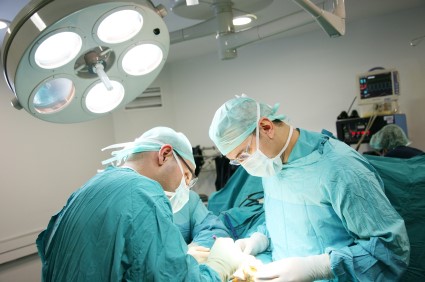 TJ Warren of the Phoenix Suns will have to have season-ending surgery on his most recent foot injury. Warren suffered a broken foot injury and his status suggests he will be missing the rest of the 2015-6 season due to recovery. The 22-year-old is considered “the Suns’ third-leading scorer,” averaging 11.0 points per game.
TJ Warren of the Phoenix Suns will have to have season-ending surgery on his most recent foot injury. Warren suffered a broken foot injury and his status suggests he will be missing the rest of the 2015-6 season due to recovery. The 22-year-old is considered “the Suns’ third-leading scorer,” averaging 11.0 points per game.
Foot surgery is sometimes necessary to fix a foot ailment. To learn more, consult with Dr. Joshua David Scoll of Pennsylvania. Our doctor will assist you with all of your foot and ankle needs.
When Is Surgery Necessary?
Foot and ankle surgery is generally reserved for cases in which less invasive, conservative procedures have failed to help with the problem. Some of the cases in which surgery may be necessary are:
- Removing foot deformities like bone spurs and bunions
- Severe arthritis that has caused bone issues
- Cosmetic reconstruction
What Types of Surgery Are There?
The type of surgery you receive will depend on the nature of the problem you have. Some of the possible surgeries include:
- Bunionectomy for painful bunions
- Surgical fusion for realignment of bones
- Neuropathy decompression surgery to treat nerve damage
Benefits of Surgery
Although surgery is usually a last resort, it can provide more complete pain relief compared to non-surgical methods and may allow you to finally resume full activity.
Surgical techniques have also become increasingly sophisticated. Techniques like endoscopic surgery allow for smaller incisions and faster recovery times.
If you have any questions, please contact our offices located in Philadelphia and Bensalem, PA. We offer the newest diagnostic and treatment technologies for all your foot care needs.
Walker Duncan Spotted with Crutches and Walking Boot for Foot Injury
 Freshman Walker Duncan was seen walking with crutches and his foot in a walking boot late January at the Dan Magill Tennis Courts. Duncan discovered he had sustained a stress reaction in his metatarsals, which will require recovery time off the tennis courts. He “was feeling some pain in my foot and I played through it,” which led to him getting a MRI.
Freshman Walker Duncan was seen walking with crutches and his foot in a walking boot late January at the Dan Magill Tennis Courts. Duncan discovered he had sustained a stress reaction in his metatarsals, which will require recovery time off the tennis courts. He “was feeling some pain in my foot and I played through it,” which led to him getting a MRI.
Sports related foot and ankle injuries need proper treatment before players can go back to their regular routines. If you have any concerns, consult with Dr. Joshua David Scoll of Pennsylvania. Our doctor will assist you with all of your foot and ankle needs.
Sport Related Foot and Ankle Injuries
Foot and ankle injuries are a common occurrence when it comes to athletes of any sport. While many athletes dismiss the initial aches and pains, the truth is that ignoring potential foot and ankle injuries can lead to serious problems. As athletes continue to place pressure and strain the area further, a mild injury can turn into something as serious as a rupture and may lead to a permanent disability. There are many factors that contribute to sports related foot and ankle injuries, which include failure to warm up properly, not providing support or wearing bad footwear. Common injuries and conditions athletes face, including:
- Plantar Fasciitis
- Plantar Fasciosis
- Achilles Tendinitis
- Achilles Tendon Rupture
- Ankle Sprains
Sports-related injuries are commonly treated using the RICE method. This includes rest, applying ice to the injured area, compression and elevating the ankle. More serious sprains and injuries may require surgery, which could include arthroscopic and reconstructive surgery. Rehabilitation and therapy may also be required in order to get any recovering athlete to become fully functional again. Any unusual aches and pains an athlete sustains must be evaluated by a licensed, reputable medical professional.
If you have any questions, please contact our offices located in Philadelphia and Bensalem, PA. We offer the newest diagnostic and treatment technologies for all your foot care needs.
Plantar Fasciitis Common Among Young Football Players
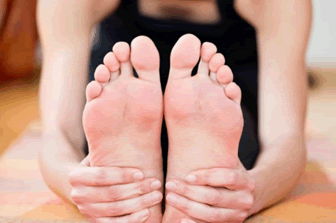 For young football players, plantar fasciitis is one of the most dreaded career-ending conditions. At times, putting full weight on the leg can become problematic since the weight causes pain on the heel. Because it is an overuse injury, it said to occur due to weak muscles in the foot that can also result in plantar fascia inflammation. Football players young and old need the proper amount of treatment and full recovery to come back to the playing field.
For young football players, plantar fasciitis is one of the most dreaded career-ending conditions. At times, putting full weight on the leg can become problematic since the weight causes pain on the heel. Because it is an overuse injury, it said to occur due to weak muscles in the foot that can also result in plantar fascia inflammation. Football players young and old need the proper amount of treatment and full recovery to come back to the playing field.
Plantar fasciitis can be very painful and inconvenient. If you are experiencing heel pain or symptoms of plantar fasciitis, consult with Dr. Joshua David Scoll of Pennsylvania. Our doctor will assist you with all of your foot and ankle needs.
What is Plantar Fasciitis?
Plantar fasciitis is the inflammation of the thick band of tissue that runs along the bottom of your foot, known as the plantar fascia, and causes mild to severe heel pain.
What Causes Plantar Fasciitis?
· Excessive running
· Non-supportive shoes
· Overpronation
· Repeated stretching and tearing of the plantar fascia
How Can It Be Treated?
· Conservative measures – anti-inflammatories, ice packs, stretching exercises, physical therapy, orthotic devices
· Shockwave therapy – sound waves are sent to the affected area to facilitate healing and are usually used for chronic cases of plantar fasciitis
· Surgery – usually only used as a last resort when all else fails. The plantar fascia can be surgically detached from the heel
While very treatable, plantar fasciitis is definitely not something that should be ignored. Especially in severe cases, speaking to your doctor right away is highly recommended to avoid complications and severe heel pain. Your podiatrist can work with you to provide the appropriate treatment options tailored to your condition.
If you have any questions, please contact our offices located in Philadelphia and Bensalem, PA. We offer the newest diagnostic and treatment technologies for all your foot care needs.
Osteoarthritis in Older Adults
 Osteoarthritis is an inflammatory disease that occurs most commonly in older adults. Adults who feel constant pain in their joints may find that they have osteoarthritis. Osteoarthritis can restrict motion as well as wear down cartilage of the joints. Have your condition checked out by a podiatrist to have it properly diagnosed. Joint pain can also be caused by previous physical injuries.
Osteoarthritis is an inflammatory disease that occurs most commonly in older adults. Adults who feel constant pain in their joints may find that they have osteoarthritis. Osteoarthritis can restrict motion as well as wear down cartilage of the joints. Have your condition checked out by a podiatrist to have it properly diagnosed. Joint pain can also be caused by previous physical injuries.
Arthritis can be a difficult condition to live with. If you are seeking treatment, consult with Dr. Joshua David Scoll of Pennsylvania. Our doctor will assist you with all of your foot and ankle needs.
Arthritic Foot Care
Arthritis is a joint disorder that involves inflammation of different joints in your body, such as in your feet. Arthritis is often caused by a degenerative joint disease and causes mild to severe pain in all affected areas. On top of this, swelling and stiffness in the affected joints can also be a common symptom of arthritis.
In many cases, wearing ill-fitting shoes can worsen the effects and pain of arthritis. Wearing shoes that have a lower heel and extra room can help your feet feel more comfortable. In cases of rheumatoid arthritis, the arch in your foot may become problematic. Buying shoes with proper arch support that contour to your feet can help immensely.
Alleviating Arthritic Pain
- Exercises that stretch the foot can prevent further pain and injury and increase mobility
- Most of the pain can be alleviated with anti-inflammatory drugs, heat, and topical medications
- Massages can help to temporarily alleviate pain.
It is best to see your doctor for the treatment that is right for your needs and symptoms. Conditions vary, and a podiatrist can help you determine the right method of care for your feet.
If you have any questions, please contact our offices located inPhiladelphia and Bensalem, PA. We offer the newest diagnostic and treatment technologies for all your foot care needs.
Columbus East Sophomore Overcomes Stress Fracture
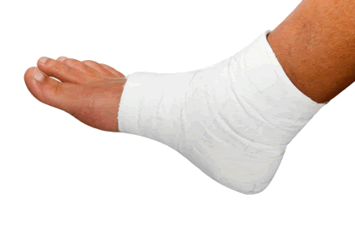 Columbus East sophomore Lizzy Frazier suffered a stress fracture in her ankle and shin while cross-country running and had to recover in a walking boot for about 9 weeks. Frazier is now “one of the top swimmers on the Olympians squad,” which competed at the Hoosier Hill Conference. Frazier, however, doesn’t let any injuries stop her from working her hardest. Although “she couldn’t run, Frazier was able to swim. She was in the pool two days after the cross-country season ended.”
Columbus East sophomore Lizzy Frazier suffered a stress fracture in her ankle and shin while cross-country running and had to recover in a walking boot for about 9 weeks. Frazier is now “one of the top swimmers on the Olympians squad,” which competed at the Hoosier Hill Conference. Frazier, however, doesn’t let any injuries stop her from working her hardest. Although “she couldn’t run, Frazier was able to swim. She was in the pool two days after the cross-country season ended.”
Activities where too much pressure is put on the feet can cause stress fractures. If you have any concerns about your feet consult with Dr. Joshua David Scoll of Pennsylvania. Our doctor will assist you with all of your foot and ankle needs.
Dealing with Stress Fractures of the Foot and Ankle
The Stress Fractures occur on the foot and ankle when muscles in these areas weaken from too much or too little use. Then the feet and ankles lose support when walking or running from the impact of the ground. Since there is no protection the bones receive the full impact of each step. The stress on the feet causes cracks to form in the bones, thus called stress fractures.
What are Stress Fractures?
Stress fractures occur frequently in individuals whose daily activities cause great impact on the feet and ankles. Stress factors are most common among:
-runners
-people affected with Osteoporosis
-play tennis or basketball
-gymnastics
-high impact workouts
Symptoms
Pain from the fractures occur in the area of the fractures, and can be constant or intermittent. It will often cause sharp or dull pain with swelling and tenderness. Engaging in any kind of activity which involves in high impact will aggravate pain.
If you have any questions, please contact our offices located in Philadelphia and Bensalem, PA. We offer the newest diagnostic and treatment technologies for all your foot care needs.
Botox possible Treatment for Hyperhidrosis
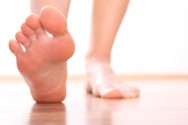 Although Teen Vogue suggests against botox as a possible treatment option for acne, botox has long been viewed as a common treatment for controlling hyperhidrosis. Hyperhidrosis, a condition described in which the body excessively sweats, which can be caused by various reasons, can be managed through the shrinking of pores. Botox helps shrink the oil production and size of pores, blocking sweat glands. Less oil production leads to the shrinkage of pores as the follicles do not become as swollen if there were more oil.
Although Teen Vogue suggests against botox as a possible treatment option for acne, botox has long been viewed as a common treatment for controlling hyperhidrosis. Hyperhidrosis, a condition described in which the body excessively sweats, which can be caused by various reasons, can be managed through the shrinking of pores. Botox helps shrink the oil production and size of pores, blocking sweat glands. Less oil production leads to the shrinkage of pores as the follicles do not become as swollen if there were more oil.
If you have any concerns, consult with Dr. Joshua David Scoll of Pennsylvania. Our doctor will assist you with all of your foot and ankle needs.
Hyperhidrosis of the Feet
Hyperhidrosis is a rare disorder that can cause people to have excessive sweating of their feet. This can usually occur all on its own without rigorous activity involved. People who suffer from hyperhidrosis may also experience sweaty palms.
Although it is said that sweating is a healthy process meant to cool down the body temperature and to maintain a proper internal temperature, hyperhidrosis may prove to be a huge hindrance on a person’s everyday life.
Plantar hyperhidrosis is considered to be the main form of hyperhidrosis. Secondary hyperhidrosis can refer to sweating that occurs in areas other than the feet or hands and armpits. Often this may be a sign of it being related to another medical condition such as menopause, hyperthyroidism and even Parkinson’s disease.
In order to alleviate this condition, it is important to see your doctor so that they may prescribe the necessary medications so that you can begin to live a normal life again. If this is left untreated, it is said that it will persist throughout an individual’s life.
A last resort approach would be surgery, but it is best to speak with your doctor to find out what may be the best treatment for you.
If you have any questions, please contact our offices located in Philadelphia and Bensalem, PA. We offer the newest diagnostic and treatment technologies for all your foot care needs.
Melbourne Demons Christian Petracca Suffers Broken Toe
 Christian Petracca, midfielder for the Melbourne Demons, suffered a broken toe injury during his Christmas break. Petracca will be on recovery for about a month, and afterwards will be getting back into shape. As a first-year AFL Rising Star, there are high expectations for Petracca. Petracca plans to continue strength training throughout his injury recovery. He injured his ACL last pre-season and was unable to play a game.
Christian Petracca, midfielder for the Melbourne Demons, suffered a broken toe injury during his Christmas break. Petracca will be on recovery for about a month, and afterwards will be getting back into shape. As a first-year AFL Rising Star, there are high expectations for Petracca. Petracca plans to continue strength training throughout his injury recovery. He injured his ACL last pre-season and was unable to play a game.
A broken toe can be very painful and lead to complications if not properly fixed. If you have any concerns about your feet contact Dr. Joshua David Scoll of Pennsylvania. Our doctor will attend to all of your foot and ankle needs and provide you with quality treatment.
What to Know About a Broken Toe
Although most people try to avoid foot trauma such as banging, stubbing, or dropping heavy objects on their feet, the unfortunate fact is that it is a common occurrence. Given the fact that toes are positioned in front of the feet, they typically sustain the brunt of such trauma. When trauma occurs to a toe, the result can be a painful break (fracture).
Symptoms of a Broken Toe
- throbbing pain
- swelling
- bruising on the skin and toenail
- the inability to move the toe
- toe appears crooked or disfigured
- tingling or numbness in the toe
Generally, it is best to stay off of the injured toe with the affected foot elevated.
Severe toe fractures may be treated with a splint, cast, and in some cases, minor surgery. Due to its position and the pressure it endures with daily activity, future complications can occur if the big toe is not properly treated.
If you have any questions, please contact our offices located in Philadelphia and Bensalem, PA. We offer the newest diagnostic and treatment technologies for all your foot care needs.
Liverpool Captain suffers Heel Pain post Injury
 Captain Jordan Henderson of Liverpool has been suffering from severe chronic heel pain while also recovering from a metatarsal injury. The Liverpool captain was diagnosed with the condition plantar fasciitis, and despite seeing several specialists he is resigned to the fact that he must simply manage the pain. “At times you do get down, especially with this type of injury,” he shared. “With my metatarsal I knew exactly what kind of time scale I’d be out for. You can really focus on each step and what you need to do.”
Captain Jordan Henderson of Liverpool has been suffering from severe chronic heel pain while also recovering from a metatarsal injury. The Liverpool captain was diagnosed with the condition plantar fasciitis, and despite seeing several specialists he is resigned to the fact that he must simply manage the pain. “At times you do get down, especially with this type of injury,” he shared. “With my metatarsal I knew exactly what kind of time scale I’d be out for. You can really focus on each step and what you need to do.”
Anyone can wind up suffering from heel pain. If you have any concerns about your feet or ankles, contact Dr. Joshua David Scoll of Pennsylvania. Our doctor will attend to all of your foot and ankle needs and provide you with quality treatment.
Causes of Heel Pain
● Heel pain is often associated with plantar fasciitis. The plantar fascia is a band of tissues that extends along the bottom of the foot. A rip or tear in this ligament can cause inflammation of the tissue.
● Achilles tendonitis is another cause of heel pain. Inflammation of the Achilles tendon will cause pain from fractures and muscle tearing. Lack of flexibility is also another symptom.
● Heel spurs are another cause of pain. When the tissues of the plantar fascia undergo a great deal of stress, it can lead to ligament separation from the heel bone, causing heel spurs.
Why Might Heel Pain Occur?
- Wearing ill-fitting shoes
- Wearing non-supportive shoes
- Weight change
- Excessive running
Treatments
Heel pain should be treated as soon as possible for immediate results. Keeping your feet in a stress free environment will help. If you suffer from Achilles tendonitis or plantar fasciitis, applying ice will reduce the swelling. Stretching before an exercise like running will help the muscles. Using all these tips will help make heel pain a thing of the past.
With the advancements in technology and greater knowledge of how muscles and joints work, physical therapists can turn things around dramatically.
If you have any questions, please contact our offices located in Philadelphia and Bensalem, PA. We offer the newest diagnostic and treatment technologies for all your foot care needs.
The “Floating Toe” in Children
 In recent years, many parents are noticing a “floating toe” in their children. This means that at least one toe on the foot is not touching the ground. The condition is usually harmless, but can cause foot pain, future foot problems, or a lack of balance. “When children have floating toes, the area of the sole of their foot touching the ground is smaller and harder for them to maintain their balance,” stated Takuma Usada, director of Toranomon Chiropractic Office in Tokyo. One concern is that floating toes occurs due to a lack of foot usage in present day children. Having children participate in foot usage activities may help prevent the condition.
In recent years, many parents are noticing a “floating toe” in their children. This means that at least one toe on the foot is not touching the ground. The condition is usually harmless, but can cause foot pain, future foot problems, or a lack of balance. “When children have floating toes, the area of the sole of their foot touching the ground is smaller and harder for them to maintain their balance,” stated Takuma Usada, director of Toranomon Chiropractic Office in Tokyo. One concern is that floating toes occurs due to a lack of foot usage in present day children. Having children participate in foot usage activities may help prevent the condition.
Looking out for potential foot and ankle injuries as well as general health is vital in maintaining proper development in children’s feet.For more information, speak to Dr. Joshua David Scoll of Pennsylvania. Our doctor will assist you with all of your foot and ankle concerns and answer any of your related questions.
Keeping Children's Feet Healthy
Having healthy feet in childhood can help prevent medical problems later in life, namely in the back and legs. As children grow, their feet require different types of care from birth to school-age.
Although babies do not walk yet, it is still very important to take care of their feet.
- Avoid putting tight shoes or socks on his or her feet
- Allow the baby to stretch and kick his or her feet to feel comfortable
As a toddler, kids are now on the move and begin to develop differently. At this age toddlers are getting a feel for walking, so don’t be alarmed if your toddler is unsteady or ‘walks funny’. Be sure the child wears comfortable and protective shoes so that they can grow into their feet properly.
As your child gets older, it is important to teach them how to take care of their feet
- Show them proper hygiene to prevent infections such as fungus
- Be watchful of any pain or injury
- Have all injuries checked by a doctor as soon as possible
- Comfortable, protective shoes should always be worn, especially at play
Children of all ages are constantly developing and growing, and as a parent you want to make sure that nothing is hindering their maturation.
If you have any questions, please contact our offices located in Philadelphia and Bensalem, PA. We offer the newest diagnostic and treatment technologies for all your foot care needs.
Toenail Fungus
 Do you manage your nails often? Evaluating your nails is important for your overall health, not just for the health of your nails. The appearance of your nails can indicate many things, including problems like toenail fungus. Toenail fungus can be transmitted, similar to athlete’s foot, in wet conditions, which can cause nails to become thick and brittle. Toenail fungus is an infection that also occurs in diabetic patients. It is generally contagious and requires extensive treatment options such as pills or topical medications.
Do you manage your nails often? Evaluating your nails is important for your overall health, not just for the health of your nails. The appearance of your nails can indicate many things, including problems like toenail fungus. Toenail fungus can be transmitted, similar to athlete’s foot, in wet conditions, which can cause nails to become thick and brittle. Toenail fungus is an infection that also occurs in diabetic patients. It is generally contagious and requires extensive treatment options such as pills or topical medications.
While toenail fungus is troublesome to eradicate, doing so is not impossible. For more information, speak to Dr. Joshua David Scoll of Pennsylvania. Our doctor will assist you with all of your foot and ankle concerns and answer any of your related questions.
Toenail Fungus Treatment
Toenail fungus is a problem which affects many people and is hard to get rid of. Fortunately, there are several methods to go about treating toenail fungus.
Antibiotics & Treatments
Lamisil – is the most commonly effective treatment for toenail fungus. It is available as an antibiotic Terbinafine tablet and cream. Terbinafine is a chemical component which kills fungal growth on the body. Applying regular doses will gradually kill the fungal growth. It is important to keep the area clean and air free.
Talcum powder – applying powder on the feet and shoes helps keep the feet free of moisture and sweat.
Sandals or open toed shoes – wearing these will allow air movement and help keep feet dry. They also expose your feet to light, which fungus cannot tolerate. Socks with moisture wicking material also help as well
Alternative Treatments
There are always surgical procedures that are available for toenail fungus. Some people would like immediate quick removal of toenail fungus. Surgeons will be able to cut through and remove the growth using laser surgery. It is important not to try and remove it yourself. Once removed, your old shoes will need to be replaced to avoid reinfection.
If you have any questions, please contact our offices located in Philadelphia and Bensalem, PA. We offer the newest diagnostic and treatment technologies for all your foot care needs.
Four New Drugs To Be Approved For Rheumatoid Arthritis
 Rheumatoid Arthritis is a debilitating disease that affects as much as 1.5 million people across the nation. RA is a chronic disease that requires extensive treatment over an elongated period of time. Though there have been drugs on the market since the last 15 years, these drugs can be costly to use. These particular RA drugs helped slow the progression of the disease and reduced the need for surgery. However, there are four new RA drugs that are soon to hit the market and that may be more cost-effective than current drugs. These four new drugs are expected to receive FDA approval and expect to aid in the prevention of RA growth in patients.
Rheumatoid Arthritis is a debilitating disease that affects as much as 1.5 million people across the nation. RA is a chronic disease that requires extensive treatment over an elongated period of time. Though there have been drugs on the market since the last 15 years, these drugs can be costly to use. These particular RA drugs helped slow the progression of the disease and reduced the need for surgery. However, there are four new RA drugs that are soon to hit the market and that may be more cost-effective than current drugs. These four new drugs are expected to receive FDA approval and expect to aid in the prevention of RA growth in patients.
Because RA affects more than just your joints, including the joints in your feet and ankles, it is important to seek early diagnosis from your podiatrist if you feel like the pain in your feet might be caused by RA. For more information, speak to Dr. Joshua David Scoll of Pennsylvania. Our doctor will assist you with all of your foot and ankle concerns and answer any of your related questions.
What Is Rheumatoid Arthritis?
Rheumatoid Arthritis (RA) is an autoimmune disorder in which the body’s own immune system attacks the membranes surrounding the joints. Inflammation of the lining and eventually the destruction of the joint’s cartilage and bone occur, causing severe pain and immobility.
Rheumatoid Arthritis of the Feet
Although RA usually attacks multiple bones and joints throughout the entire body, almost 90 percent of cases result in pain in the foot or ankle area.
Symptoms
- Swelling & pain in the feet
- Stiffness in the feet
- Pain on the ball or sole of feet
- Joint shift and deformation
Diagnosis
Quick diagnosis of RA in the feet is important so that the podiatrist can treat the area effectively. Your doctor will ask you about your medical history, occupation, and lifestyle to determine the origin of the condition. Rheumatoid Factor tests help to determine if someone is affected by the disease.
If you have any questions, please contact our offices located in Philadelphia and Bensalem, PA. We offer the newest diagnostic and treatment technologies for all your foot care needs.
Five Tips for Daily Foot Care
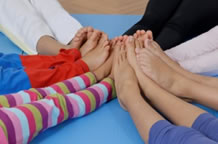 With the hustle and bustle of the holiday season, busy lifestyles may give way to sore and achy feet. To keep feet happy during the holidays, the American College of Foot and Ankle Surgeons (ACFAS) offers five tips. Avoid wearing narrow-fitting, overly-high-heeled shoes that are uncomfortable on the feet. If you suffer from gout, try to avoid over-indulging in what you eat, as certain foods can trigger gout attacks. Keep in mind the sanitary conditions of your favorite nail salon before getting your holiday pedicure. Use caution when traveling outside in the ice and snow. Inspect the feet for any abnormal conditions, and do not ignore any signs of pain.
With the hustle and bustle of the holiday season, busy lifestyles may give way to sore and achy feet. To keep feet happy during the holidays, the American College of Foot and Ankle Surgeons (ACFAS) offers five tips. Avoid wearing narrow-fitting, overly-high-heeled shoes that are uncomfortable on the feet. If you suffer from gout, try to avoid over-indulging in what you eat, as certain foods can trigger gout attacks. Keep in mind the sanitary conditions of your favorite nail salon before getting your holiday pedicure. Use caution when traveling outside in the ice and snow. Inspect the feet for any abnormal conditions, and do not ignore any signs of pain.
Every day foot care is very important to prevent infection and other foot ailments. For more information, speak to Dr. Joshua David Scoll of Pennsylvania. Our doctor will assist you with all of your foot and ankle concerns and answer any of your related questions.
Every Day Foot Care
Often, people take care of their bodies, face and hair more so than they do for their feet. But the feet are a very important aspect of our bodies, and one that we should pay more attention to. After all, without our feet, we would not be able to perform most daily tasks. It is best to check your feet regularly to make sure there are no new bruises or cuts that you may not have noticed before, for example.
For dry feet, moisturizer can easily be a remedy and can be applied as often as necessary to the affected areas. Wearing shoes that fit well can also help you maintain good foot health, as well as making it easier to walk and do daily activities without the stress or pain of ill-fitting shoes, high heels, or even flip flops.
Also, wearing clean socks with closed shoes is important to ensure that sweat and bacteria do not accumulate within the shoe. Clean socks help to prevent athlete’s foot, fungi problems, bad odors, and can absorb sweat.
If you have any questions, please contact our offices located inPhiladelphia and Bensalem, PA. We offer the newest diagnostic and treatment technologies for all your foot care needs.
Barefoot Running Research Suggests Physical Benefits
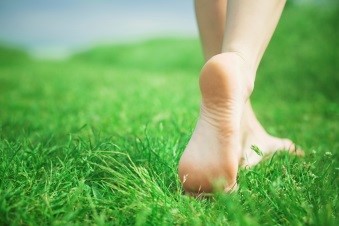 A study is being done in the Western Cape of Africa to examine how children who have been barefoot most of their lives may have stronger and healthier feet. According to the research, “the ankles of players who train barefoot are more stable and...more agile.” Further research suggests that practicing barefoot exercise while young may help in foot development. The increased stability in the children can lead to improved balance and the prevention of foot and ankle injuries.
A study is being done in the Western Cape of Africa to examine how children who have been barefoot most of their lives may have stronger and healthier feet. According to the research, “the ankles of players who train barefoot are more stable and...more agile.” Further research suggests that practicing barefoot exercise while young may help in foot development. The increased stability in the children can lead to improved balance and the prevention of foot and ankle injuries.
Barefoot running has its own share of benefits and disadvantages. For more information, speak to Dr. Joshua David Scoll of Pennsylvania. Our doctor will assist you with all of your foot and ankle concerns and answer any of your related questions.
Barefoot Running
The Impact of Barefoot Running
-Running without shoes changes the motion of your running, as most running is done by landing on the heel of the feet.
-Running barefoot requires a different way of running; the landing is done on the front part of the feet.
The Advantages of Barefoot Running
-When running and landing on the front feet, the impact on the feet and ankle is reduced; this can reduce stress injuries.
-It strengthens muscles in the feet, ankles and the lower legs.
-Balance of the body is improved and there is greater sensory input from the feet to the rest of the body.
The Drawbacks of Barefoot Running
-No protection while running makes it likely that runners will land on sharp objects and scrapes, resulting in bruises and cuts on the feet.
-Blisters may form.
-Possibility of plantar fascia problems.
-Risk of getting Achilles tendonitis.
So what can runners do to make barefoot running safe? It’s best to make a slow transition from running shoes to barefoot running. Once the feet begin to adjust, try walking, then jogging and gradually increasing the distance. Minimalist running shoes may also be an option.
If you have any questions, please contact our offices located inPhiladelphia and Bensalem, PA. We offer the newest diagnostic and treatment technologies for all your foot care needs.
Club Sevilla’s Mark Andreolli Sustains Achilles Tendon Injury
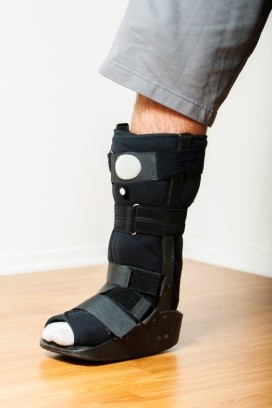 Italian center-back Mark Andreolli will be missing the rest of the season, club Sevilla has confirmed, following a foot injury. Andreolli sustained a Achilles tendon injury in the Champions League game against Real Sociedad during the first half. In response to the injury, Club Sevilla announced that Andreolli will be having surgery, which will put him on rest for 6 to 8 months.
Italian center-back Mark Andreolli will be missing the rest of the season, club Sevilla has confirmed, following a foot injury. Andreolli sustained a Achilles tendon injury in the Champions League game against Real Sociedad during the first half. In response to the injury, Club Sevilla announced that Andreolli will be having surgery, which will put him on rest for 6 to 8 months.
Achilles tendon injuries need immediate attention to avoid future complications. If you have any concerns about your feet contact Dr. Joshua David Scoll of Pennsylvania. Our doctor will treat your foot and ankle needs.
What is the Achilles Tendon?
The Achilles tendon is a tendon that connects the lower leg muscles and calf to the heel of the foot. It is the strongest tendon in the human body and is essential for making movement possible. Because this tendon is such an integral part of the body, any injuries to it can cause severe difficulties and should immediately be presented to a doctor.
What are the symptoms of an Achilles Tendon Injury?
There are various types of injuries that can affect the Achilles tendon. The two most common are Achilles tendinitis and ruptures of the tendon.
Achilles Tendinitis Symptoms
- Inflammation
- Dull to Severe Pain
- Increased blood flow to the tendon
- Thickening of the tendon
Rupture Symptoms
- Extreme pain and swelling in the foot
- Total immobility
Treatment and Prevention
Achilles tendon injuries are diagnosed by a thorough physical evaluation, which can include an MRI. Treatment involves rest, physical therapy, and in some cases, surgery. However, various preventative measures can be taken to avoid these injuries, such as:
- Thorough stretching of the tendon before and after exercise
- Strengthening exercises like calf raises, squats, leg curls, leg extensions, leg raises, lunges, and leg presses
If you have any questions, please contact our offices located in Philadelphia and Bensalem, PA. We offer the newest diagnostic and treatment technologies for all your foot care needs.
Sisters Suffering from Disease Since Young Age
 16-year-old Isabel and her younger sister Tessa have been battling chronic diseases since they were young. Isabel has idiopathic arthritis, which restricts movement and strains cartilage by filling joints with fluid. However, both Isabel and her sister aren’t shy of physical activity like soccer and are even part of the Arthritis Foundation, a national organization that supports and advocates for arthritis. Their treatments consist of injections, drugs, and chemotherapy to reduce inflammation and hopefully remission of the diseases.
16-year-old Isabel and her younger sister Tessa have been battling chronic diseases since they were young. Isabel has idiopathic arthritis, which restricts movement and strains cartilage by filling joints with fluid. However, both Isabel and her sister aren’t shy of physical activity like soccer and are even part of the Arthritis Foundation, a national organization that supports and advocates for arthritis. Their treatments consist of injections, drugs, and chemotherapy to reduce inflammation and hopefully remission of the diseases.
Arthritis can be a difficult condition to live with. If you are suffering from arthritic foot pain, contact Dr. Joshua David Scoll of Pennsylvania. Our podiatrist can treat your foot and ankle needs.
Arthritic Foot Care
Arthritis is a joint disorder that involves inflammation of different joints in your body, such as in your feet. Arthritis is often caused by a degenerative joint disease and causes mild to severe pain in all affected areas. On top of this, swelling and stiffness in the affected joints can also be a common symptom of arthritis.
In many cases, wearing ill-fitting shoes can worsen the effects and pain of arthritis. Wearing shoes that have a lower heel and extra room can help your feet feel more comfortable. In cases of rheumatoid arthritis, the arch in your foot may become problematic. Buying shoes with proper arch support that contour to your feet can help immensely.
Alleviating Arthritic Pain
- Exercises that stretch the foot can prevent further pain and injury and increase mobility
- Most of the pain can be alleviated with anti-inflammatory drugs, heat, and topical medications
- Massages can help to temporarily alleviate pain.
It is best to see your doctor for the treatment that is right for your needs and symptoms. Conditions vary, and a podiatrist can help you determine the right method of care for your feet.
If you have any questions about arthritic foot care, please feel free to contact our offices located in Bensalem and Philadelphia, PA. We offer the newest diagnostic and treatment technologies for all your foot and ankle needs.
More...
Ways to avoid Damage from High Heels
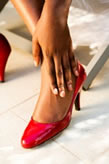 Love heels but don’t know what to do about the damage it’s causing to your feet and back? Consider buying heels that have stacked heels, which are thicker and may be more comfortable to walk in because of the support. When walking in heels, walk from your heel to toe, following each step. When buying heels, it’s also important to buy your exact size. Find heels that are not too narrow and pointy, and give your feet breathing room when you’ve been wearing heels for too long.
Love heels but don’t know what to do about the damage it’s causing to your feet and back? Consider buying heels that have stacked heels, which are thicker and may be more comfortable to walk in because of the support. When walking in heels, walk from your heel to toe, following each step. When buying heels, it’s also important to buy your exact size. Find heels that are not too narrow and pointy, and give your feet breathing room when you’ve been wearing heels for too long.
High heels have a history for causing foot and ankle problems. If you have any concerns about your feet contact Dr. Joshua David Scoll of Pennsylvania. Our doctor will treat your foot and ankle needs.
Effects of High Heels on the Feet
High heels are popular shoes among women because they are associated with femininity. Despite their appeal, they can cause many health problems if worn too frequently.
What parts my body will be affected by high heels?
- Ankle Joints
- Achilles Tendon – may shorten and stiffen with prolonged wear
- Balls of the Feet
- Knees – heels cause the knees to bend constantly, creating stress on them
- Back – they decrease the spine’s ability to absorb shock, which may lead to back pain. Also, the vertebrae of the lower back may compress.
What kinds of foot problems can develop from wearing high heels?
- Corns
- Calluses
- Hammertoe
- Bunions
- Morton’s Neuroma
- Plantar Fasciitis
How can I still wear high heels and maintain foot health?
If you want to wear high heeled shoes, make sure that you are not wearing them every day, as this will help prevent long term physical problems. Try wearing thicker heels as opposed to stilettos to distribute weight more evenly across the feet. Always make sure you are wearing the proper shoes for the right occasion, such as sneakers for exercising. If you walk to work, try carrying your heels with you and changing into them once you arrive at work. Adding inserts to your heels can help cushion your feet and absorb shock; you can buy either full inserts or metatarsal pads.
If you have any questions, please contact our offices located in Philadelphia and Bensalem, PA. We offer the newest diagnostic and treatment technologies for all your foot care needs.
The Proper Care for Preventing Ingrown Toenails
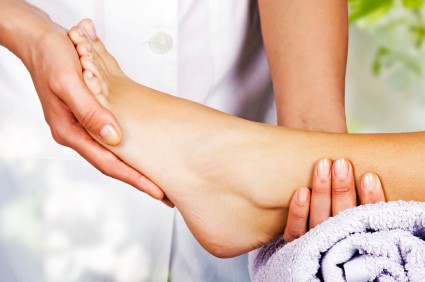 While ingrown toenails can become painful and problematic, there are ways to reduce and prevent the pain. Trim straight across and never on a curve while only cutting the tip; you don’t want to cut them too short. Avoid digging the nail clipper into the corner of the nail beds, filing them down is the best option. Wearing shoes with a wider toe box can keep the pressure off the toes, preventing ingrown toenails from occurring.
While ingrown toenails can become painful and problematic, there are ways to reduce and prevent the pain. Trim straight across and never on a curve while only cutting the tip; you don’t want to cut them too short. Avoid digging the nail clipper into the corner of the nail beds, filing them down is the best option. Wearing shoes with a wider toe box can keep the pressure off the toes, preventing ingrown toenails from occurring.
Ingrown toenails can become painful if they are not treated properly. For more information about other cures for swollen feet during pregnancy, speak to Dr. Joshua David Scoll of Pennsylvania. Our doctor will assist you with all of your foot and ankle concerns and answer any of your related questions.
Ingrown Toenails
Ingrown toenails occur when a toenail grows sideways into the bed of the nail, causing pain, swelling, and possibly infection.
Causes
- Bacterial infections
- Improper nail cutting such as cutting it too short or not straight across
- Trauma to the toe, such as stubbing, which causes the nail to grow back irregularly
- Ill-fitting shoes that bunch the toes too close together
- Genetic predisposition
Prevention
Because ingrown toenails are not something found outside of shoe-wearing cultures, going barefoot as often as possible will decrease the likeliness of developing ingrown toenails. Wearing proper fitting shoes and using proper cutting techniques will also help decrease your risk of developing ingrown toenails.
Treatment
Ingrown toenails are a very treatable foot condition. In minor cases, soaking the affected area in salt or antibacterial soaps will not only help with the ingrown nail itself, but also help prevent any infections from occurring. In more severe cases, surgery is an option. In either case, speaking to your podiatrist about this condition will help you get a better understanding of specific treatment options that are right for you.
If you have any questions, please contact our offices located in Philadelphia and Bensalem, PA. We offer the newest diagnostic and treatment technologies for all your foot care needs.
Brain Activity Sheds Light on Peripheral Neuropathy Treatment
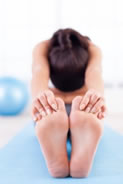 Researchers from McGill University of Montreal found brain activity that can assist in providing treatment for diabetic patients suffering from peripheral neuropathy. Professor Seguela of the neurology and neurosurgery department discovered this by studying the HCN, hyperpolarization-activated cyclic nucleotide-gated, channels and how they transmit pain signals through the ACC. Brain scans found that emotional and cognitive factors can also influence pain of peripheral neuropathy.
Researchers from McGill University of Montreal found brain activity that can assist in providing treatment for diabetic patients suffering from peripheral neuropathy. Professor Seguela of the neurology and neurosurgery department discovered this by studying the HCN, hyperpolarization-activated cyclic nucleotide-gated, channels and how they transmit pain signals through the ACC. Brain scans found that emotional and cognitive factors can also influence pain of peripheral neuropathy.
When dealing with systemic disease of the feet, is extremely important to check the affected areas routinely so that any additional problems are caught quickly. For professional help, see Dr. Joshua David Scoll of Pennsylvania. Our doctors will ensure that your feet receive the care that they need.
Systemic Diseases of the Feet
Systemic diseases affect the whole body, and symptoms usually are displayed in the feet. This condition can make a patient’s ability to walk unbearable. Systemic diseases include gout, diabetes mellitus, neurological disorders, and arthritis.
Gout – is caused by an excess of uric acid in the body. Common symptoms include pain, inflammation, and redness at the metatarsal/phalangeal joint of the base big toe. Gout can be treated by NSAIDs to relieve pain and inflammation, and other drugs that lower the acid levels in the body.
Diabetes mellitus – is an increase in the level of blood sugar that the body cannot counteract with its own insulin. Failure to produce enough insulin is a factor in Diabetes.
Diabetes of the Feet
Diabetic Neuropathy – may lead to damaged nerves and affect the feet through numbness and loss of sensation.
Peripheral Vascular Disease – can restrict the blood flow to the feet, and often times lead to amputation of the feet.
If you have any questions feel free to contact our offices located in Bensalem and Philadelphia, PA. We offer the latest in diagnostic and treatment technology to meet your needs.
University Students donate Shoes to over 300 Children
 Student athletes from the University of Central Arkansas shoes to over 300 Conway children through the international project Shoes of Hope. The project aims to bring children together by washing their feet and then giving them a new pair of shoes. For this event, the University’s athletes raised over $5,000. Graham Gibbs of Samaritan’s Feet shared, “60 percent of kids K through 12 in Arkansas are either on or eligible for free and reduced lunches. So that’s a demographic stat that we use to gauge need. If they’re needing food, they’re needing clothes, they’re needing shoes.”
Student athletes from the University of Central Arkansas shoes to over 300 Conway children through the international project Shoes of Hope. The project aims to bring children together by washing their feet and then giving them a new pair of shoes. For this event, the University’s athletes raised over $5,000. Graham Gibbs of Samaritan’s Feet shared, “60 percent of kids K through 12 in Arkansas are either on or eligible for free and reduced lunches. So that’s a demographic stat that we use to gauge need. If they’re needing food, they’re needing clothes, they’re needing shoes.”
Looking out for potential foot and ankle injuries as well as general health is vital in maintaining proper development in children’s feet. If you have any concerns contact Dr. Joshua David Scoll of Pennsylvania. Our doctorwill treat your foot and ankle needs.
Keeping Children's Feet Healthy
Having healthy feet in childhood can help prevent medical problems later in life, namely in the back and legs. As children grow, their feet require different types of care from birth to school-age.
Although babies do not walk yet, it is still very important to take care of their feet.
- Avoid putting tight shoes or socks on his or her feet
- Allow the baby to stretch and kick his or her feet to feel comfortable
As a toddler, kids are now on the move and begin to develop differently. At this age toddlers are getting a feel for walking, so don’t be alarmed if your toddler is unsteady or ‘walks funny’. Be sure the child wears comfortable and protective shoes so that they can grow into their feet properly.
As your child gets older, it is important to teach them how to take care of their feet
- Show them proper hygiene to prevent infections such as fungus
- Be watchful of any pain or injury
- Have all injuries checked by a doctor as soon as possible
- Comfortable, protective shoes should always be worn, especially at play
Children of all ages are constantly developing and growing, and as a parent you want to make sure that nothing is hindering their maturation.
If you have any questions please feel free to contact our offices located in Philadelphia and Bensalem, PA. We offer the newest diagnostic tools and technology to treat your foot and ankle needs.
Preparing an Emergency Kit for Diabetic Patients Key to Good Health
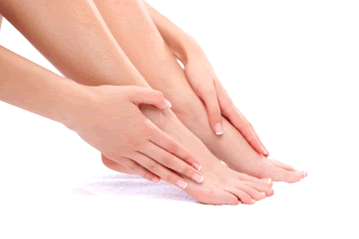 To ensure adequate care during emergency situations, diabetics should prepare an emergency kit that contains the necessary supplies, medications, and especially foods. Rebecca Ercums, Lifestyle Education Assistance Program Diabetes Health Educator, shares, “In your emergency kit, include foods that meet your dietary needs and help you maintain good blood sugar levels. Crackers; peanut butter; powdered milk; low sugar cereal; juice; hard candy or glucose tablets; canned tuna, salmon, and chicken; and nuts are good choices.”.
To ensure adequate care during emergency situations, diabetics should prepare an emergency kit that contains the necessary supplies, medications, and especially foods. Rebecca Ercums, Lifestyle Education Assistance Program Diabetes Health Educator, shares, “In your emergency kit, include foods that meet your dietary needs and help you maintain good blood sugar levels. Crackers; peanut butter; powdered milk; low sugar cereal; juice; hard candy or glucose tablets; canned tuna, salmon, and chicken; and nuts are good choices.”.
Diabetic foot care is important in preventing foot complications such as ulcers or amputation. If you are suffering from diabetes or have any other concerns about your feet, contact Dr. Joshua David Scoll of Pennsylvania. Our doctor will diagnose and treat your foot and ankle needs.
Diabetic Foot Care
Diabetes affects millions of people every year. Diabetes can damage blood vessels in many parts of the body, including the feet. Because of this, taking care of your feet is essential if you have diabetes, and having a podiatrist help monitor your foot health is highly recommended.
The Importance of Caring for Your Feet
- Routinely inspect your feet for bruises or sores.
- Wear socks that fit your feet comfortably.
- Wear comfortable shoes that provide adequate support.
Patients with diabetes should have their doctor monitor their blood levels because blood sugar levels play such a huge role in diabetic care. Monitoring these levels on a regular basis is highly advised.
It is always best to inform your healthcare professional of any concerns you may have regarding your feet, especially for diabetic patients. Early treatment and routine foot examinations are keys to maintaining proper health, especially because severe complications can arise if proper treatment is not applied.
If you have any questions please feel free to contact our offices located in Philadelphia and Bensalem, PA. We offer the newest diagnostic tools and technology to treat your foot and ankle needs.
